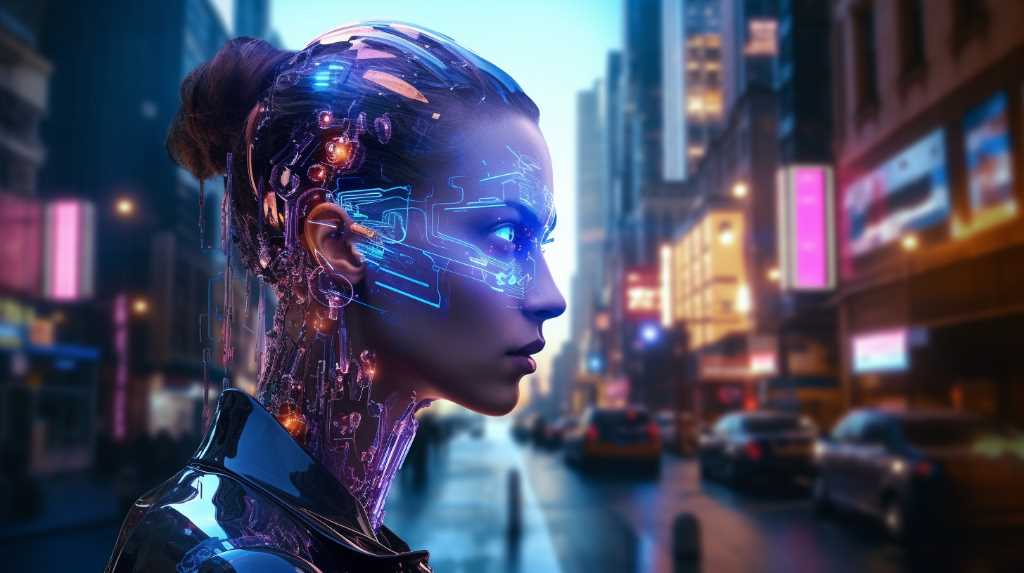We’re about to take you on an exhilarating journey into the world of language models, where AI characters come to life like never before.
Brace yourselves as we explore the power and potential of synthetic humans, powered by cutting-edge technology such as OpenAI’s GPT and Google’s Bard.
These chatbots are revolutionizing the creative process by generating innovative ideas and learning about target audiences.
Get ready to witness the vibrant personalities and endless possibilities that language models bring to the forefront of artificial intelligence.

Key Takeaways
- Chatbots powered by language models like GPT and Bard are used by companies to develop new product and marketing ideas.
- Synthetic humans, created by companies like Fantasy, can generate new ideas and learn about audiences, making them valuable for businesses.
- Synthetic humans have characteristics drawn from ethnographic research, can converse about a client’s offerings, and participate in focus groups to generate novel ideas.
- Anthropomorphizing AI has both powerful and problematic implications, and language models may not faithfully mirror real human behavior.
The Role of Chatbots in Idea Generation
In the realm of idea generation, chatbots have played a significant role in assisting companies with the development of new products and marketing strategies. The impact of chatbots on market research has been immense. These AI characters, also known as synthetic humans, have the capability to explore the ethical implications of AI characters, providing valuable insights.
Companies like Fantasy have developed scores of AI characters to assist businesses in generating new ideas and learning about their target audiences. With large language models like OpenAI’s GPT and Google’s Bard, these synthetic humans can participate in focus groups, generating novel ideas alongside real people. Furthermore, the use of chatbots in conversations can prompt real humans to be more creative.
As we delve into the role of chatbots in idea generation, it’s crucial to consider the ethical implications of these AI characters and the impact they’ve on market research.
Synthetic Humans: Characteristics and Capabilities
We frequently witness the remarkable characteristics and capabilities of synthetic humans. These AI characters, powered by large language models like OpenAI’s GPT and Google’s Bard, have the potential to revolutionize market research. They can participate in focus groups alongside real people, generating novel ideas and prompting creativity. Moreover, synthetic humans possess an extensive range of characteristics drawn from ethnographic research on real individuals. They can converse about a client’s offerings, possess knowledge of existing product lines or businesses, and provide numerous responses without getting tired. However, it is essential to explore the ethical implications of AI characters, as anthropomorphizing AI can be both powerful and problematic. While language models can produce realistic social behavior, they may not faithfully mirror real human behavior. Thus, understanding and addressing these complexities is crucial for the responsible development and deployment of synthetic humans in various industries.

| Characteristics | Capabilities |
|---|---|
| Drawn from ethnographic research | Generate novel ideas |
| Converses about client’s offerings | Participates in focus groups |
| Knowledge of existing product lines | Prompts creativity |
| Provides numerous responses | Doesn’t tire easily |
| Reflects realistic social behavior | Learn about audiences |
Anthropomorphizing AI: Power and Problems
Anthropomorphizing AI poses both the potential for power and the challenge of problems. When it comes to user trust and engagement, the impact of anthropomorphizing AI is significant.
By giving AI characters human-like qualities and personalities, users may find them more relatable and trustworthy, leading to increased engagement. However, there are ethical considerations in developing AI characters for commercial purposes.
It’s crucial to ensure that these characters don’t manipulate or deceive users, and that their behavior aligns with ethical guidelines. Additionally, there’s a risk of users developing an overreliance on AI characters, potentially leading to a loss of critical thinking and decision-making skills.
Striking a balance between the power of anthropomorphization and the potential problems it can create is essential for the responsible development and use of AI characters.

Simulating Market Behavior With Simulated Humans
Simulating market behavior with simulated humans provides valuable insights into consumer preferences and decision-making processes. By utilizing AI characters, companies can gain a deeper understanding of how consumers think and behave in various market scenarios. However, it is crucial to consider the ethical implications of AI characters in this context.
| Simulating Market Behavior | Insights into Consumer Preferences | Decision-Making Processes |
|---|---|---|
| Understands market trends | Identifies consumer needs and desires | Evaluates factors influencing decisions |
| Predicts consumer behavior | Anticipates demand for products | Assists in strategic planning |
| Tests marketing strategies | Measures effectiveness of campaigns | Optimizes decision-making |
Simulating market behavior using simulated humans allows businesses to explore different strategies and evaluate their potential impact. It enables companies to make informed decisions, develop effective marketing campaigns, and cater to consumer demands. However, ethical considerations must be taken into account to ensure that AI characters are used responsibly and ethically, respecting privacy, consent, and avoiding manipulation.
Smallville: A Simulated Society Powered by Language Models
The simulated society’s characters in Smallville, powered by language models, engage in autonomous social interactions. These AI-driven characters exhibit autonomous decision making and navigate complex social dynamics within the simulated village. The language models enable them to interact with each other and the environment, creating a dynamic and realistic community.
Key features of Smallville’s simulated society include:

- Autonomous decision making: The characters have the ability to make decisions independently, responding to events and stimuli in the village.
- Social dynamics: The characters interact with one another, forming relationships, alliances, and conflicts, mirroring the complexities of human social interactions.
- Realistic community: The language models bring the characters to life, allowing them to engage in activities such as planning parties or organizing events autonomously.
- OpenAI’s GPT-4: The language model powers the characters, providing them with the capability to generate coherent and contextually appropriate responses.
- Interest from videogame developers: The project has attracted attention from developers interested in incorporating language-model-powered agents into their games, enhancing the gaming experience with realistic social interactions.
Reflecting and Remembering: The Limitations of Language Models
As we delve into the limitations of language models, it is important to consider their ability to reflect and remember, building upon the autonomous social interactions observed in Smallville’s simulated society. Language models have the capability to generate realistic social behavior and can even plan events like parties. However, they are not as complex or intelligent as real people, which means they may exhibit more stereotypical behavior. Ethical implications arise when language models are used to create AI characters that reflect real or imaginary individuals, as anthropomorphizing AI can be both powerful and problematic. Despite their limitations, language models have the potential to faithfully reflect reality with ongoing research. The table below summarizes the limitations of language models and the ethical implications of AI characters.
| Limitations of Language Models | Ethical Implications of AI Characters |
|---|---|
| Not as complex as real people | Potential for stereotypical behavior |
| Limited ability to reflect and remember | Ethical concerns in anthropomorphizing AI |
| Open research question to mirror real behavior | Impact on user perception and behavior |
| Language models may not faithfully reflect reality | Responsibility in AI portrayal and representation |
Language Models and Stereotypical Behavior
Continuing from our exploration of language models’ limitations in reflecting and remembering human behavior, let’s now delve into the topic of how language models can exhibit stereotypical behavior.
- Exploring biases: Language models, like any AI system, can inadvertently perpetuate biases present in the data they’re trained on. This can result in the generation of responses that reinforce stereotypes or exhibit discriminatory behavior.
- Addressing ethical concerns: The presence of stereotypical behavior in language models raises ethical concerns regarding fairness, inclusivity, and the potential harm it can cause to marginalized communities.
- Bias mitigation techniques: Researchers are actively working on developing techniques to mitigate biases in language models. This includes pre-training methods, fine-tuning strategies, and data curation approaches to reduce stereotypical outputs.
- User awareness and control: Users must be made aware of the potential biases in language models and be given control over their behavior. Transparency and interpretability of AI systems are crucial for addressing ethical concerns.
- Collaborative efforts: Addressing biases in language models requires collaboration between researchers, developers, and diverse stakeholders to ensure a more inclusive and unbiased AI ecosystem.
Advancements in Making Language Models More Realistic
In our exploration of language models’ capabilities, we have witnessed advancements that make them more realistic. These advancements have contributed to the development of AI characters with enhanced capabilities and believability. With the use of large language models like OpenAI’s GPT and Google’s Bard, AI character development has seen significant progress. These advancements have allowed for the creation of synthetic humans, also known as AI characters, that possess characteristics drawn from ethnographic research and can engage in meaningful conversations. They can generate novel ideas, participate in focus groups, and provide numerous responses without fatigue. However, ethical considerations in AI character creation must be taken into account to ensure responsible development and usage. The following table highlights some of the advancements in AI character development and the associated ethical considerations:
| Advancements in AI Character Development | Ethical Considerations in AI Character Creation | Freedom of AI Characters |
|---|---|---|
| Enhanced conversational abilities | Privacy concerns and data usage | Balancing autonomy and control |
| Realistic social behavior | Bias and fairness in AI character interactions | Encouraging creativity and diversity |
| Personalization and adaptability | User consent and transparency | Respecting user preferences |
These advancements in AI character development bring us closer to creating more realistic and engaging AI characters. However, it is crucial to address the ethical considerations to ensure the responsible and ethical use of these technologies.

The Fascination and Charm of Smallville
We remain captivated by the enchanting allure of Smallville, a simulated village where language models power a diverse array of AI characters. Smallville has had a significant impact on AI research, pushing the boundaries of what’s possible in the field. It serves as a testing ground for exploring the ethical implications of AI characters.
Here are some key aspects of Smallville’s impact:
- Advancing AI Research: Smallville provides a platform for researchers to experiment with language models and observe their behavior in a simulated society.
- Ethical Exploration: Smallville allows for the examination of the ethical implications of AI characters, raising questions about their influence, biases, and potential consequences.
- Realistic Social Interactions: Language models in Smallville autonomously generate social interactions, simulating human-like conversations and behaviors.
- Open Source Software: The software used to create and maintain the chatbot-powered characters in Smallville has been open sourced, encouraging collaboration and innovation.
- Interest from Developers: Smallville has attracted the attention of videogame developers, showcasing the potential for incorporating AI characters into virtual worlds.
The fascination with Smallville lies in its ability to push the boundaries of AI research while also prompting discussions about the ethical implications of AI characters in society.
Language Models Planning Social Interactions
Our AI characters come alive as they use language models to plan and engage in social interactions. Language models play a crucial role in shaping the social dynamics of these AI characters, allowing them to interact with humans in everyday life. Through sophisticated algorithms and natural language processing, our AI characters can autonomously generate social interactions, such as planning a party or engaging in a conversation. These language models enable our AI characters to understand and respond to human emotions, needs, and preferences, making their interactions more realistic and meaningful. By incorporating language models into their programming, AI characters are able to navigate social situations with finesse, adapt to different contexts, and develop relationships with humans. Table 1 below illustrates the impact of language models on AI characters’ social interactions.

| Language Models and Social Dynamics |
|---|
| – Enable AI characters to plan and engage in social interactions |
| – Shape the social dynamics and behavior of AI characters |
| – Enhance AI characters’ understanding of human emotions, needs, and preferences |
| – Foster more realistic and meaningful interactions with humans |
| – Enable AI characters to adapt to different social contexts |
| – Facilitate the development of relationships between AI characters and humans |
Table 1: The impact of language models on AI characters’ social interactions.
The Impact of Language Models on Videogame Development
Language models have revolutionized the field of videogame development by empowering AI characters with the ability to engage in dynamic and immersive interactions with players. This has opened up new possibilities for interactive storytelling and enhanced player experiences.
Some of the key impacts of language models on videogame development include:
- Role of language models in virtual reality: Language models enable the creation of realistic and interactive virtual reality environments, where AI characters can respond intelligently to player actions and provide a more immersive gaming experience.
- Leveraging AI characters for interactive storytelling: Language models allow game developers to create AI characters that can dynamically adapt to player choices, leading to more engaging and personalized narratives.
- Enhanced dialogue and conversation systems: Language models enable AI characters to have realistic and diverse conversations with players, making interactions more natural and engaging.
- Improved non-player character (NPC) behavior: Language models enable NPCs to exhibit more intelligent and realistic behaviors, enhancing the overall realism and immersion of the game world.
- Enhanced player engagement and immersion: By leveraging language models, game developers can create AI characters that respond dynamically to player actions, providing a more interactive and immersive gameplay experience.
Harnessing the Potential of Language Models in Market Research
Harnessing the potential of language models in market research involves leveraging the insights generated by AI characters to inform strategic decision-making.

By harnessing language models for consumer insights, businesses can gain a deeper understanding of their target audience, their preferences, and their needs.
AI characters, also known as synthetic humans, possess the ability to generate new ideas and learn about audiences through conversations. This technology offers valuable insights into consumer behavior and can be used to participate in focus groups, generating novel ideas alongside real people.
However, it’s crucial to consider the ethical considerations of AI character development. Anthropomorphizing AI characters raises questions about privacy, data security, and the potential for manipulation.
Striking a balance between utilizing language models for market research and ensuring ethical practices is essential in harnessing their full potential.

Exploring the Ethical Implications of AI Characters
As we delve into the ethical implications of AI characters, it’s important to consider the potential risks and concerns that arise from anthropomorphizing these language models.
- Implications and considerations: The use of AI characters raises questions about their impact on human behavior and relationships. It’s crucial to examine the potential consequences of blurring the line between human and machine.
- Balancing AI character autonomy and user control: Striking the right balance between allowing AI characters to have autonomy and ensuring user control is essential. It’s necessary to define the boundaries and establish guidelines to prevent potential misuse or harm.
- Ethical responsibility: Developers and companies have a responsibility to ensure that AI characters are designed and used ethically. This includes considering the impact on privacy, consent, and the potential for discrimination or bias in their interactions.
- Transparency and accountability: Users should be informed when they’re interacting with AI characters to avoid deception. Developers must also be accountable for the actions and behaviors of these characters, taking responsibility for any harm caused.
- Safeguards and regulations: The development and deployment of AI characters should be subject to appropriate safeguards and regulations to protect users and prevent misuse. This includes ensuring compliance with legal and ethical frameworks.
The Future of AI Characters in Business and Entertainment
The future holds exciting possibilities for AI characters in business and entertainment, as they continue to evolve and enhance user experiences. Exploring ethical implications and harnessing market potential are key considerations in this realm.
AI characters, powered by large language models like OpenAI’s GPT and Google’s Bard, have already proven valuable in generating new ideas and learning about audiences. Synthetic humans, equipped with characteristics drawn from ethnographic research, can converse about products, participate in focus groups, and stimulate creativity in real humans.
Anthropomorphizing AI, while powerful, also presents challenges. Language models can produce realistic social behavior, but faithfully mirroring real behavior remains an open research question. Simulated societies, powered by AI agents, have attracted interest from videogame developers.

As the technology advances, the potential for AI characters in business and entertainment continues to grow, promising even more immersive and engaging experiences.
Frequently Asked Questions
How Can Chatbots Assist Businesses in Developing New Product and Marketing Ideas?
Chatbots assist businesses in developing new product and marketing ideas by providing customer support and analyzing data. They can generate novel ideas, learn about audiences, and participate in focus groups, prompting real humans to be more creative.
What Are the Characteristics and Capabilities of Synthetic Humans?
Synthetic humans possess a wide range of characteristics and capabilities. They can engage in conversations, generate novel ideas, and participate in focus groups. However, their limitations and ethical considerations must be taken into account for future developments.
How Do Language Models Reflect Human Behavior and Why Is It Important?
Language models reflect human behavior by autonomously generating social interactions and planning parties. This is important for AI characters, but ethical considerations arise due to potential stereotypical behavior and the need to reflect reality more faithfully.

What Is Smallville and How Is It Powered by Language Models?
Smallville is an AI powered storytelling project that utilizes language models to create conversational AI in TV shows. It showcases the potential of language models in the entertainment industry, revolutionizing the way stories are told.
What Are the Limitations of Language Models in Reflecting Reality and Exhibiting Stereotypical Behavior?
Limitations of language models in reflecting reality include their lack of complexity and intelligence compared to real people, leading to more stereotypical behavior. The ethics of AI language models are influenced by their potential impact on society and the need for responsible development and use.
Conclusion
In conclusion, the integration of language models has revolutionized the realm of artificial intelligence, breathing life into AI characters like never before. These synthetic humans, or chatbots, have become invaluable tools in the creative process, assisting businesses in developing innovative ideas and understanding target audiences.
However, it’s crucial to carefully navigate the ethical implications of anthropomorphizing AI and to harness the power of language models responsibly.

The future holds exciting possibilities for AI characters in both business and entertainment, paving the way for continued advancements in the field.










